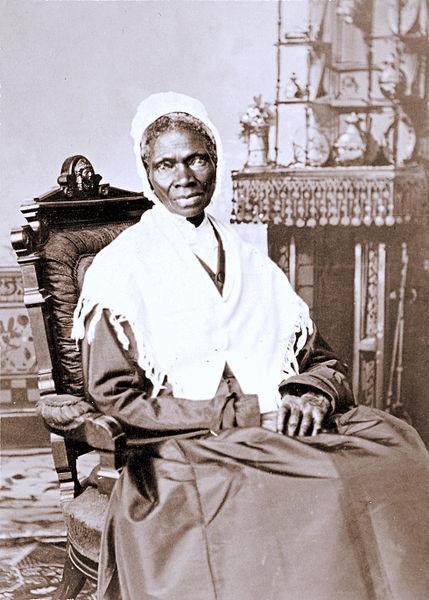Tasks: Ain't I a Woman? by Sojourner Truth
Before you study the speech, you should know more about the background of Sojourner Truth, the abolitionist movement in the United States, and the role of women in the 1800s.
Work in groups and divide the tasks among you. Spend a few minutes going through the provided sources, or other sources that you may find relevant. Take notes as you read. Then share what you have found with the rest of the group.
Who was Sojourner Truth? Why has she become so important in the fight against slavery and for women's rights? What is her legacy?
Relevant sources:
Link to National Women's History Museum: Sojourner Truth
Link to History: Sojourner TruthHow were African Americans treated during this period? What rights were they deprived of? What did they fight for?
Relevant sources:
Link to Teach Democracy: An Overview of the African-American Experience
Link to PBS: Race-based legislation in the NorthHow were women treated differently from men in the 19th century? What rights were women deprived of, and what did they fight for?
Relevant sources:
Link to Library of Congress: Women's Suffrage in the Progressive Era
Link to Encyclopedia.com: Women In The 19th Century

Study the speech and discuss the following questions. Write down your answers.
What impression do you get of Sojourner Truth from the speech? How does she present herself?
What is the message of the speech? Why do you think she gave the speech?
What is the tone of the speech?
“If the first woman God ever made was strong enough to turn the world upside down all alone, these women together ought to be able to turn it back, and get it right side up again!” What does she mean by this? Who does she refer to?
What rhetorical devices are used in the speech, and what is achieved by using them?
She states that “If my cup won't hold but a pint, and yours holds a quart, wouldn't you be mean not to let me have my little half measure full.” This is a reference to the common belief at the time that men had a greater intellect than women, and she uses the measurements of quart (larger) and pint (smaller) to bring forth her point. What is she suggesting about her right to fill up her cup, or to learn?
This speech was given in front of mostly white women, but also some men. How do you think the audience reacted to Truth's speech?
Sojourner Truth never learnt to read or write. Is it possible to see this in her speech?

Frederick Douglass and Sojourner Truth were both escaped slaves who later became prominent activists and public speakers. However, while Truth always had a female aspect included in her fight, Douglass focused more on the rights of Black people in general.
Below, you will find an extract from Douglass's speech What the Black Man Wants. Go through the speech and compare it to Ain't I a Woman?
Is one speech more powerful than the other? Which one leaves the strongest impression? Why?
Look for rhetorical devices used in the two speeches. Are the same devices used? How does Douglass's rhetoric differ from Truth's?
- Make a timeline of the most important events of the women's rights movement in the United States.
- Make a timeline of the anti-slave movement in the United States.
- Make a timeline showing when different countries gave women the right to vote. Make a note of any countries that still do not permit women to vote in elections.
Relatert innhold
The speech 'Ain't I a Woman?' was given by Sojourner Truth at the Ohio Women’s Rights Convention in 1851.